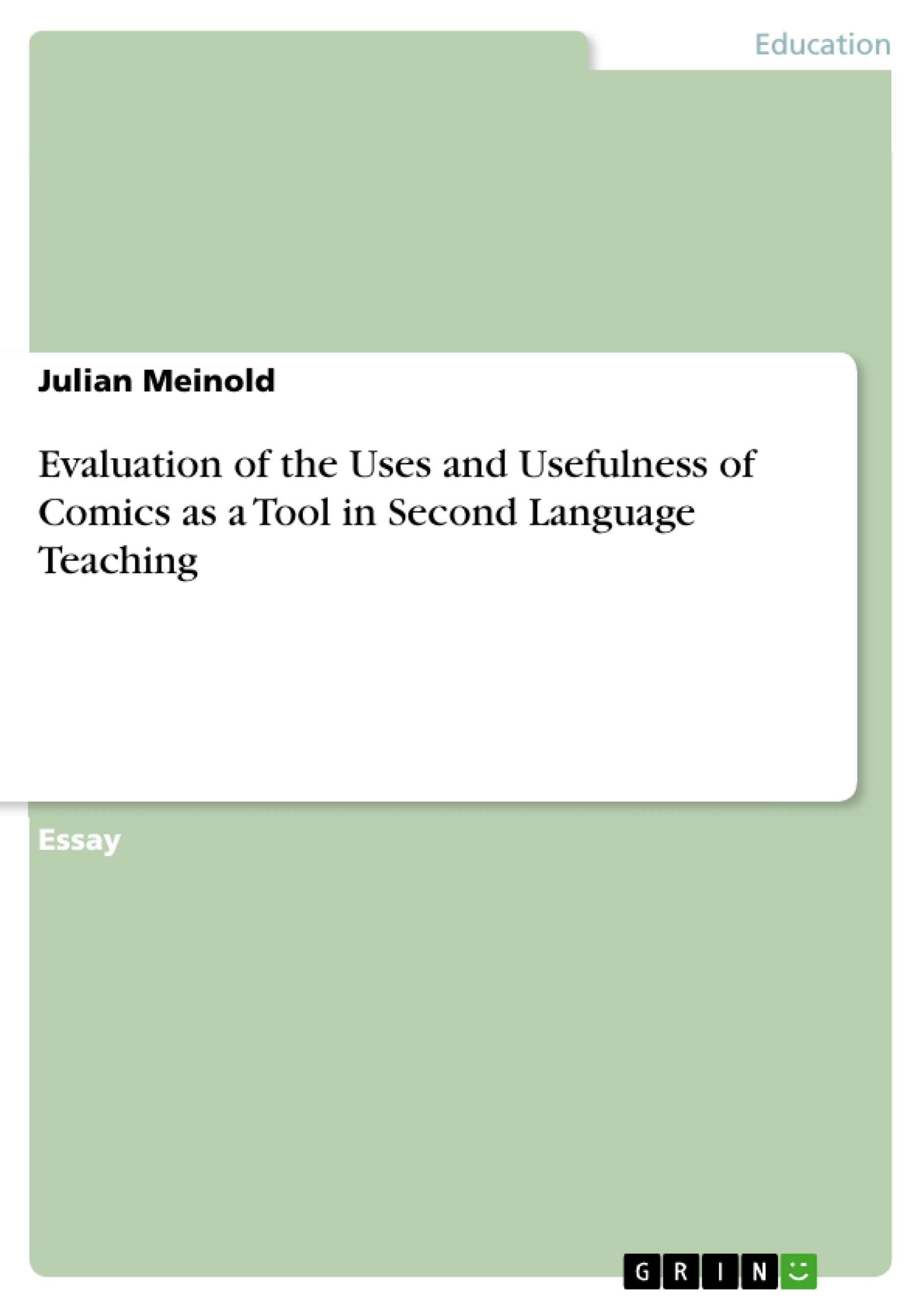Modern school books are filled with cartoons and comics, which are supposed to support the students in their learning efforts. Before it can be discussed whether comics are a useful tool in second language teaching or not, it is necessary to understand why comics have made their way into the classroom. Then, a discussion about the effects of comics on children and their abilities follows. The last part of this essay deals with concrete examples of how comics can be used in second language teaching.
It is very obvious that children are the major consumers of comic books. Paul Burgdorf, the author of the book “Comics im Unterricht”, conducted a survey among students, in which he found out that 82.4% of them read comics in their spare time. Paul Witty, a former professor of education and director of the Psycho-Educational Clinic at Northwestern University of Illinois gave an answer to the question why children read comic books by providing these eight reasons:
[...]
Table of Contents
- Introduction
- Popularity of Comics Among Children
- Potential Benefits of Comics in Education
- Potential Drawbacks of Comics in Education
- Using Comics to Teach Vocabulary
- Using Comics to Improve Writing Skills
- Conclusion
Objectives and Key Themes
This essay explores the use and usefulness of comics as a tool in second language teaching. It examines the reasons behind the popularity of comics among children, investigates potential benefits and drawbacks, and presents concrete examples of how comics can be integrated into language learning.
- The popularity and appeal of comic books amongst children and adolescents.
- Potential positive effects of comics on language acquisition and learning motivation.
- Concerns regarding potential negative impacts on reading comprehension and critical thinking.
- Practical applications of comics in second language teaching methodologies.
- The debate surrounding the use of comics in education and the need for evidence-based approaches.
Chapter Summaries
The introduction sets the stage by highlighting the prevalence of comics in modern school books and posing the central question of their effectiveness in second language teaching. The second section delves into the widespread popularity of comics among children, citing statistical data and reasons for their appeal. The following section then explores arguments in favor of using comics for their motivational power in the classroom.
Subsequently, the essay discusses counterarguments that raise concerns about potential negative influences on language development and critical thinking skills, referencing the opinions of various researchers and the lack of empirical evidence supporting those concerns. The penultimate sections then offers practical examples of lesson plans using comics for vocabulary acquisition and writing skill development.
Keywords
Comics, second language teaching, language acquisition, reading comprehension, vocabulary development, writing skills, motivation, critical thinking, educational debate, empirical research.
- Quote paper
- Julian Meinold (Author), 2008, Evaluation of the Uses and Usefulness of Comics as a Tool in Second Language Teaching, Munich, GRIN Verlag, https://www.grin.com/document/122026



